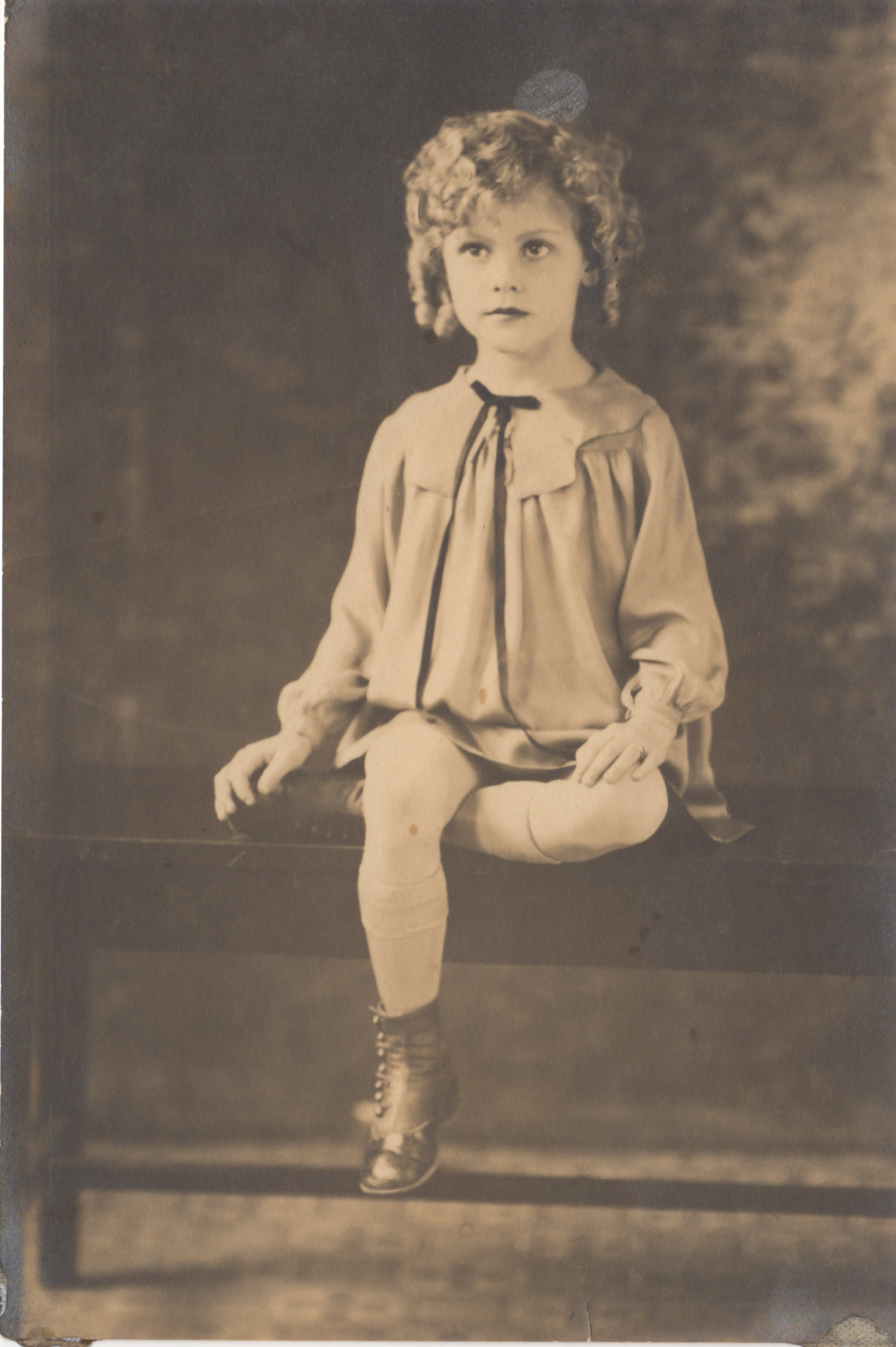The “Roaring Twenties,” also known as the Jazz Age is known for economic prosperity, social progressiveness, parties, flappers, and excess. Prohibition and “The Great Gatsby” come to many people’s minds. Speakeasies and bootleggers. Short skirts, bobbed hair and women smoking cigarettes. Art Deco and Jazz music. Industrial growth and new inventions. The spread of the automobile, electricity, and the telephone. Women’s right to vote.
However, many of these changes took place primarily in big cities. Urban areas experienced most of these changes and the majority of the economic prosperity. For rural communities, new technologies and the new industries that fueled economic development in the cities were slow to arrive. Rural areas still depended greatly on farming, which hit an economic recession well before the Great Depression struck the rest of the country in 1929.

Baby Ava, c. 1923. Ava was born Christmas Eve 1922 in Grabtown, North Carolina, a small rural community.
For Ava Gardner, who was born in 1922 in Grabtown, North Carolina, there were no “Roaring Twenties.” For rural North Carolinians like Ava’s family, the images of the 1920s that come to mind were instead seen as signs of the deterioration of traditional values and the increasing differences between urban and rural America. 75% of the North Carolina population was rural in the 1920s, meaning only a small minority of urban North Carolinians experienced the Jazz Age as depicted in popular media.

Ava Gardner’s personal childhood Bible. While urban centers saw flappers, illegal speakeasies, and women in short skirts and short hairstyles, many in rural areas considered these changes in cities to be against traditional values. Image: Holy Bible, c. late 1920s/early 1930s, in the collection of the Ava Gardner Museum.
Farmers experienced hard times well before the Depression hit, meaning rural areas never experienced the economic prosperity so often thought of during the 1920s. One of the difficulties facing farmers in the 1920s was the infestation of the boll weevil, which ruined one of farmers’ most profitable crops, cotton. Tenant farming increased throughout the decade, meaning farmers were losing their land. This happened to Ava’s father, Jonas Gardner. Jonas had purchased land with his brothers, but after several bad seasons, including the destruction of their cotton crop by the boll weevil, they could not afford to pay their debt on the land and lost it.
“For a time, Jonas continued to farm as a tenant on land that had been his. Later, he worked at the cotton gin in Grabtown and operated a sawmill and a small store near the two-story house that he managed to keep.”
– From Grabtown Girl by Doris Rollins Cannon

Ava’s aunt, mother, father and three of her older sisters before she came along to join the family. Photo circa 1910s.
Ava said of her father in her autobiography:
“On one level, there wasn’t much to separate Daddy from the other farmers in Johnston County, North Carolina. He wore overalls hitched up over a plaid woolen shirt, with a short chunky jacket added if the season demanded it…Daddy sharecropped. He farmed the land, and the deal he made was the traditional half and half. The landlord provided seed and fertilizer and they shared the profits, when there were any.”
Electricity and plumbing expanded across the state, but took longest to reach rural areas. These luxuries did not fully reach rural Johnston County until the 1940s. Likewise, the flapper image did not describe most rural women, though style trends were influenced by it. Only wealthy women who had free time could participate in the complete flapper lifestyle.

Ava, age 4, 1927.
National Prohibition, which came into effect on January 17, 1920 did not have much of an effect on North Carolina which had already enacted its own state-wide prohibition in January 1909. Johnston County, where Ava lived as a child, had actually led the opposition to state prohibition, earning itself the distinction of “Banner Whiskey County” in 1908. Johnston County has a long history with alcohol, moonshine, and bootlegging. As recently as 2016 the county itself was dry, while various towns within it allowed alcohol sales.
The one popular 1920s image that applies wholeheartedly to rural North Carolina though is that of bootleggers, but owing to North Carolina’s early enaction of Prohibition, these bootleggers had been running for 10 years already, procuring alcohol from Virginia or South Carolina and bringing it back into the state. It is North Carolina’s bootlegging history that gave rise to NASCAR, owing to bootleggers who worked to make their cars run faster, better to outrun the police in. National Prohibition did increase North Carolina moonshiners’ business, since alcohol was not so easily procured at the state borders.

Ava visited North Carolina in 1949 and stopped by the house she was born in.
The Roaring Twenties came to a crashing halt on October 29, 1929 when stock prices on Wall Street plummeted. The crash contributed to a worldwide depression. Prohibition officially ended in December 1933 and gone were the days of speakeasies and flappers, of prosperity and excess. Though for many in Ava’s North Carolina, they had never really existed.

One of the ways Ava’s parents made ends meet was by moving to and working at the Brogden Teacherage in the late 1920s. Ava’s mother cooked for the teachers that boarded there, and her father cared for the property. The Brogden school and teacherage closed in 1935 because of economic constraints caused by the Great Depression.





